The Ultimate Guide to Increasing Your Customer Lifetime Value in E-commerce with Analytics

Acquiring new customers in e-commerce is the most common way to increase your revenue in e-commerce.
However, retaining your customers and increasing their lifetime value is the most efficient pathway to growth.
The effort and resources required to retain your customers and increase their lifetime value is far less than those needed to acquire new customers.
Also, the success rate of selling to an old customer is 60 to 70%, while the success rate of selling to a new customer is 5 to 20%.
The secret to increasing your revenue without expending much resources is to improve your customer lifetime value through the aid of analytics.
Analytics has a widespread application in e-commerce, and customer lifetime value isn't left out.
In this blog post, you will learn
1. What customer lifetime value is, and how to calculate it
2. The correlation between customer acquisition cost and customer lifetime value
3. How to gain insights into your customer lifetime value with the MagicBean customer lifetime value app
4. Finally, how to increase your customer lifetime value using insights from analytics
Without much ado, let's get right into it.
What is Customer Lifetime Value?
Customer lifetime value is the monetary value a customer adds to your business throughout the time they spend being your customer.
How to Calculate a Customer's Lifetime Value
To calculate a customer's lifetime value, you need their
1. Average order value:
This is the average amount spent by a customer per transaction
2. Purchase frequency:
This is the number of times a customer purchases from you over a specific period. It can be monthly, quarterly or yearly.
3. Average customer lifetime:
This is the number of years a customer spends being your customer.
Here is the formula to calculate the lifetime value of a customer
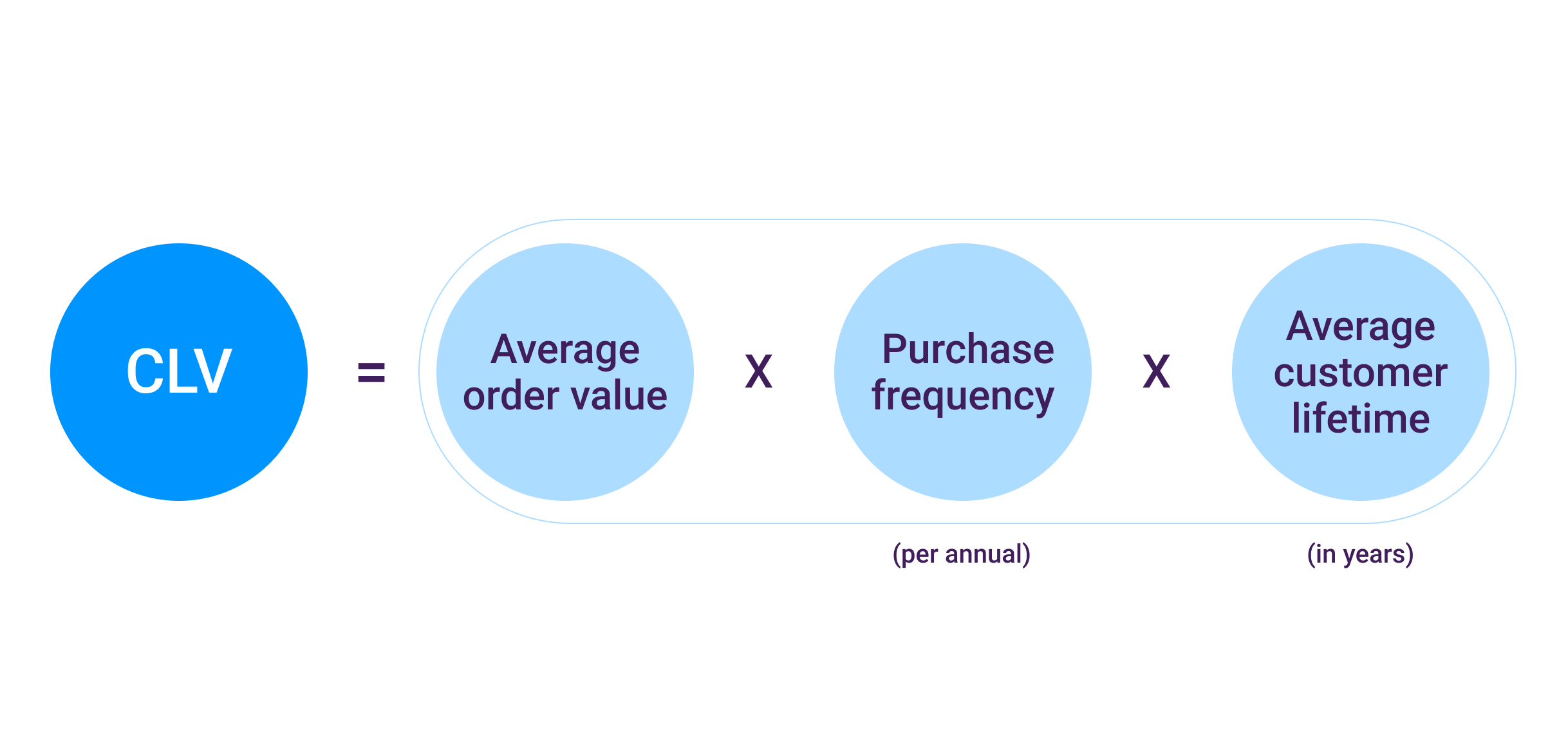
Here are a scenario of customer lifetime value calculations for further explanation
If you own an e-commerce beauty store and a customer has a monthly average order value of $100. The customer is loyal to your brand and typically shops from you every month for 3 years.
The customer lifetime value is $100 × 12 (purchase frequency in a year) × 3 = $3600.
Such a customer's lifetime value is $3600.
Correlation Between The Customer Lifetime Value and Customer Acquisition Cost
Customer acquisition cost is the amount you spend to acquire a customer. To calculate your customer acquisition cost, calculate how much you spent on the marketing campaign to get that customer.
Here is the formula for customer acquisition cost (CAC):
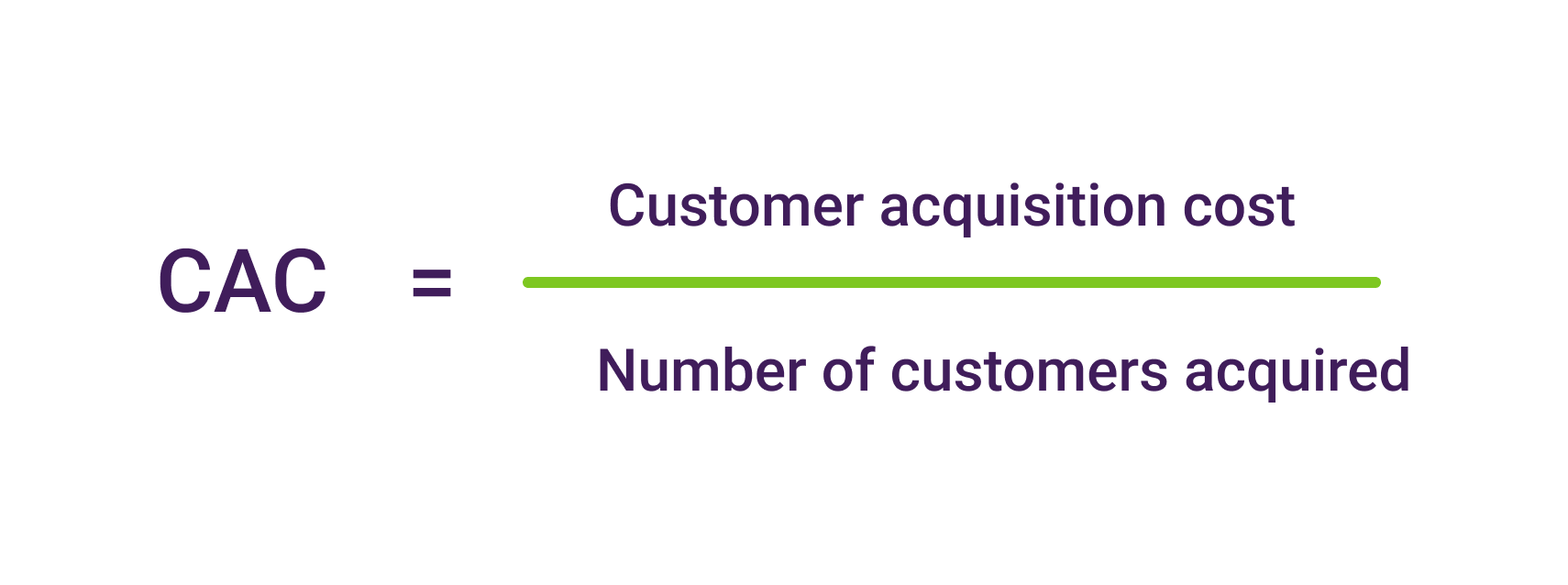
For instance, if you spent $5000 on your email marketing campaign and acquired 100 customers.
The customer acquisition cost will be $5000 ÷ 100 = $50
The amount spent to acquire a customer will be $50.
Customer acquisition cost is another metric in e-commerce that has a vital relationship with customer lifetime value.
Scenario 1:
If the CAC is greater than CLV, the business is making a loss on each customer acquired. If this goes on for a while, the business may soon find itself running into huge losses.
Tracking of metrics is, therefore, essential for businesses to avoid such situations.
Scenario 2:
If the CAC is less than the CLV, the business profits from each customer acquired. With every customer acquisition strategy deployed, this should always be the goal.
The CLV:CAC ratio differs from industry to industry. However, generally, a ratio of 3:1 is a good one.
In other words, for every $1 spent on customer acquisition, you should get $3 back, giving you a good profit margin.
How to Track and Measure Your Customer Lifetime Value With MagicBean
Keeping track of your customer lifetime value can become complex when dealing with a large number of customers; that is where an e-commerce analytics tool like MagicBean comes in to help.
MagicBean is a suite of e-commerce analytics apps that lets you keep track of your e-commerce metrics and gives you valuable insights to grow your business.
The customer lifetime value app allows you to track your lifetime value. It helps you break down the data by customer size and location, among other segmentation types.
These gained insights allow you to craft solid customer acquisition and retention strategies to drive growth and increase revenue.
Here are the various insights you get with the MagicBean customer lifetime value app:
1. Customer Value Evolution
The magicBean customer lifetime value app shows how a customer's lifetime value increases over time.
What was your customer's lifetime value after a month? How is it after three months? Gaining insights into the progression of your CLV guides your subsequent CAC.
A static customer lifetime value also shows that some customers have stopped spending in your store, giving you a nudge to kick up your customer retention strategies before such customers churn.
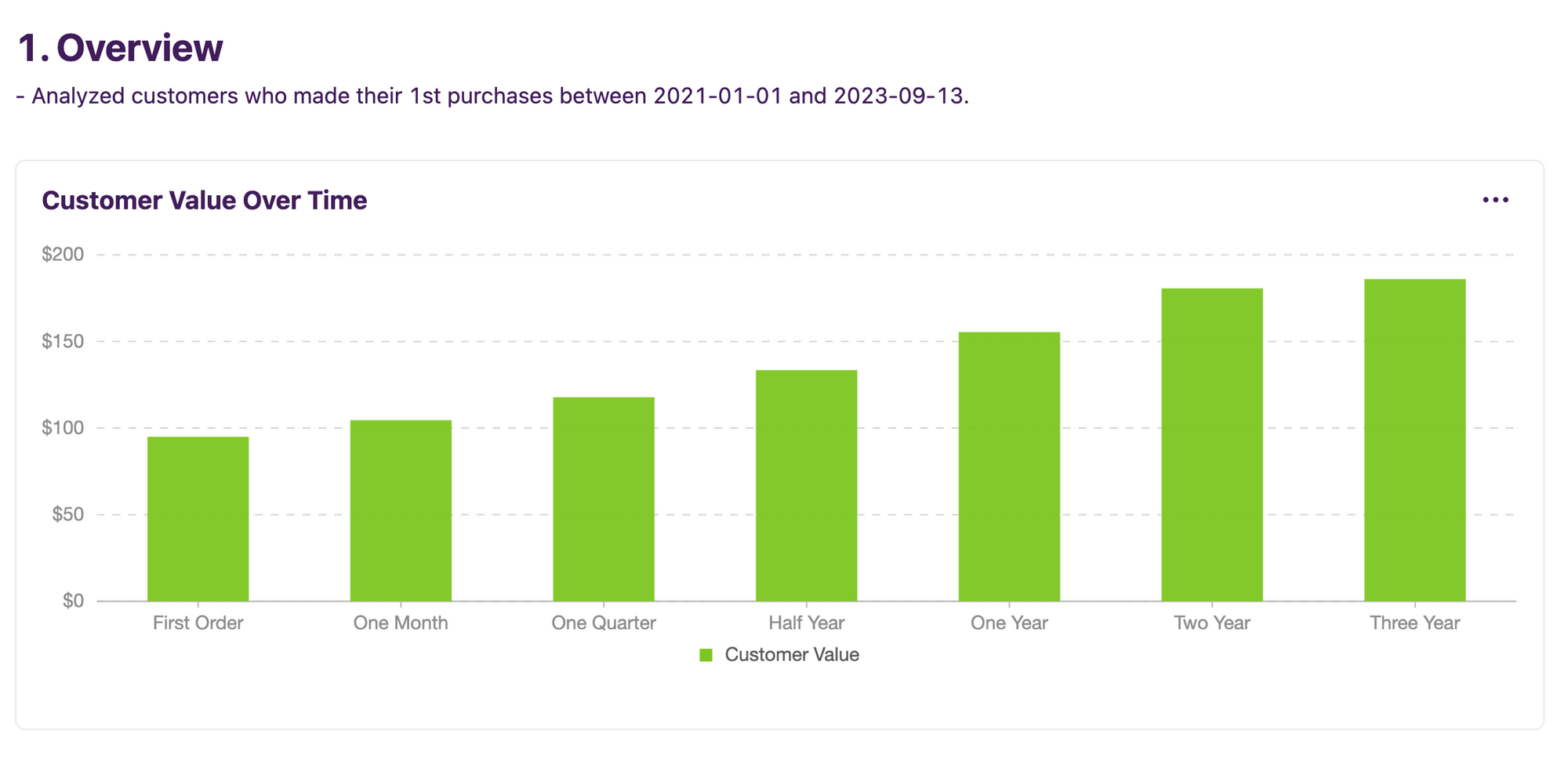
2. Customer Lifetime Value by Cohort
For a simplified view of your customer lifetime value, MagicBean breaks down your customers' lifetime value into monthly cohorts, allowing you to check for the CLV of customers acquired for each month as time progresses.
Typically, the older cohorts should have a greater customer lifetime value as they have spent more time with the brand.
Any seemingly otherwise situation can be quickly and effectively tackled by the marketing team to get a cohort back in line.
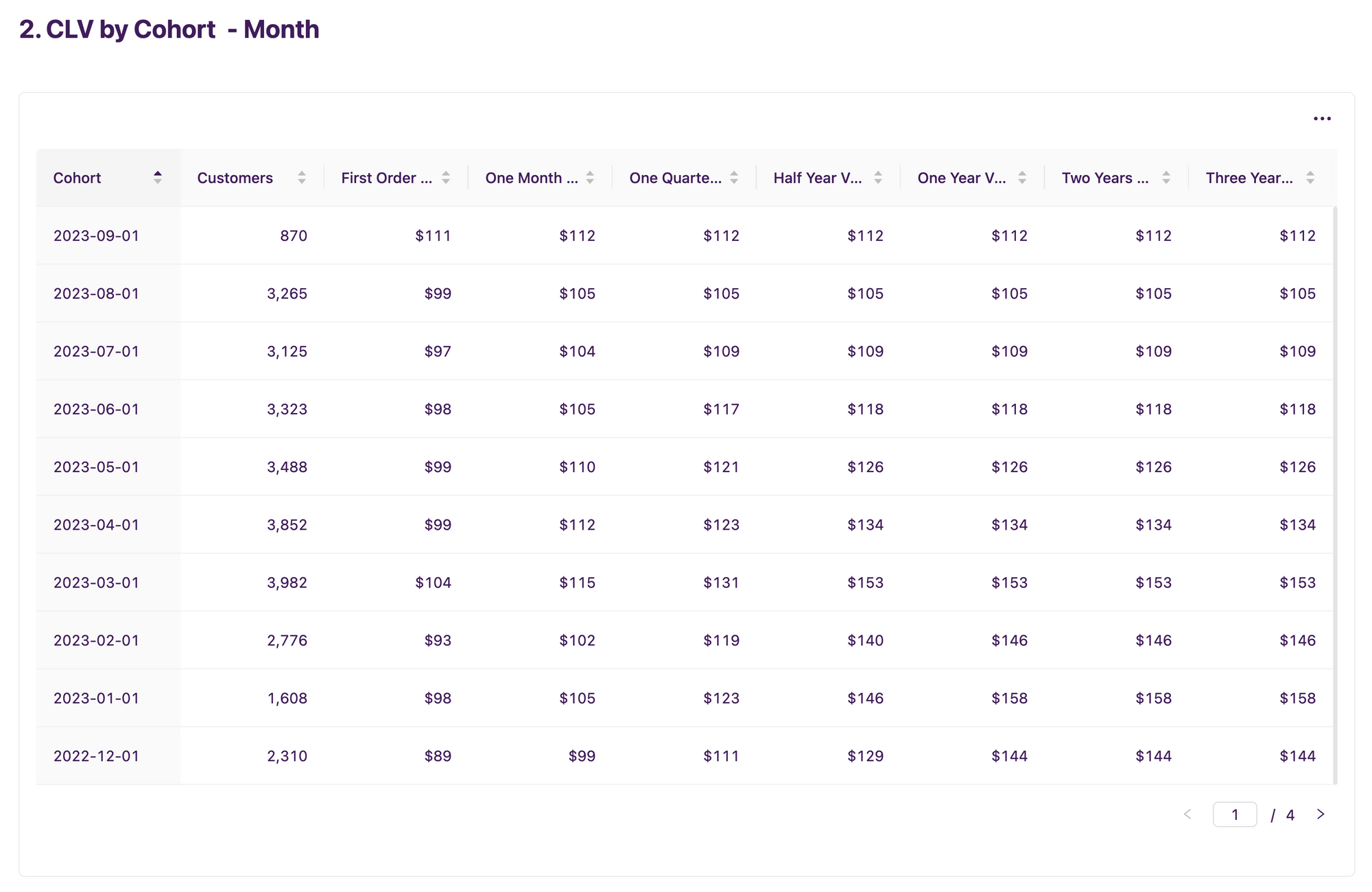
3. Customer Lifetime Value by First Purchased Brand, Category, or Specific Product
Another insight you obtain from the customer lifetime value app is customer lifetime value by the first purchased brand, category, or specific product.
When you check the CLV for brands, it lets you discover the brand with the highest CLV, giving you insight into your customer's favorite brand.
This insight allows you to shape your marketing campaigns so that you can allocate your budget more efficiently for acquiring new customers. The same applies to categories and specific products.
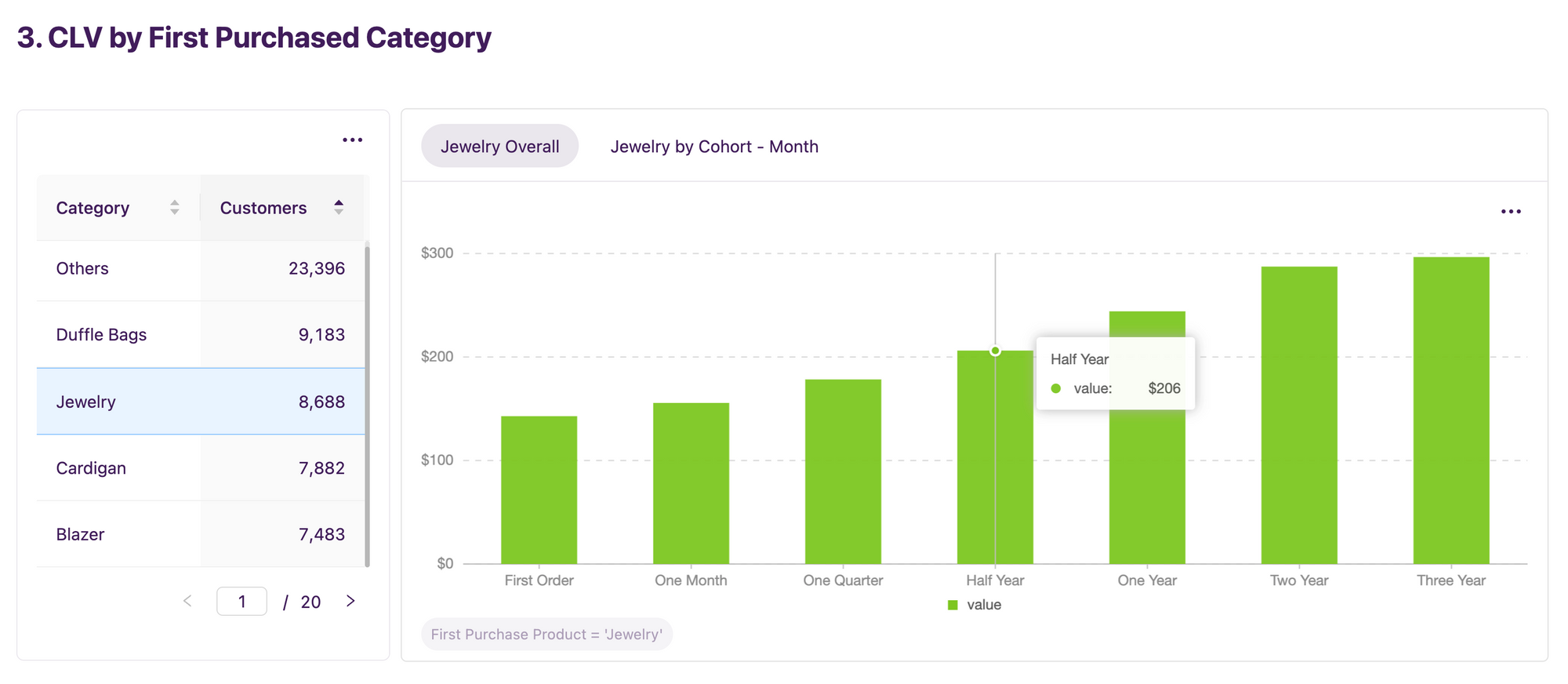
4. Customer Lifetime Value by States, Countries, and Cities
With the MagicBean customer lifetime value app, you gain valuable insights into your customers' lifetime value by state, country, and city.
When you discover the locations with your most loyal customers, it guides your budget allocation and aids your target marketing.
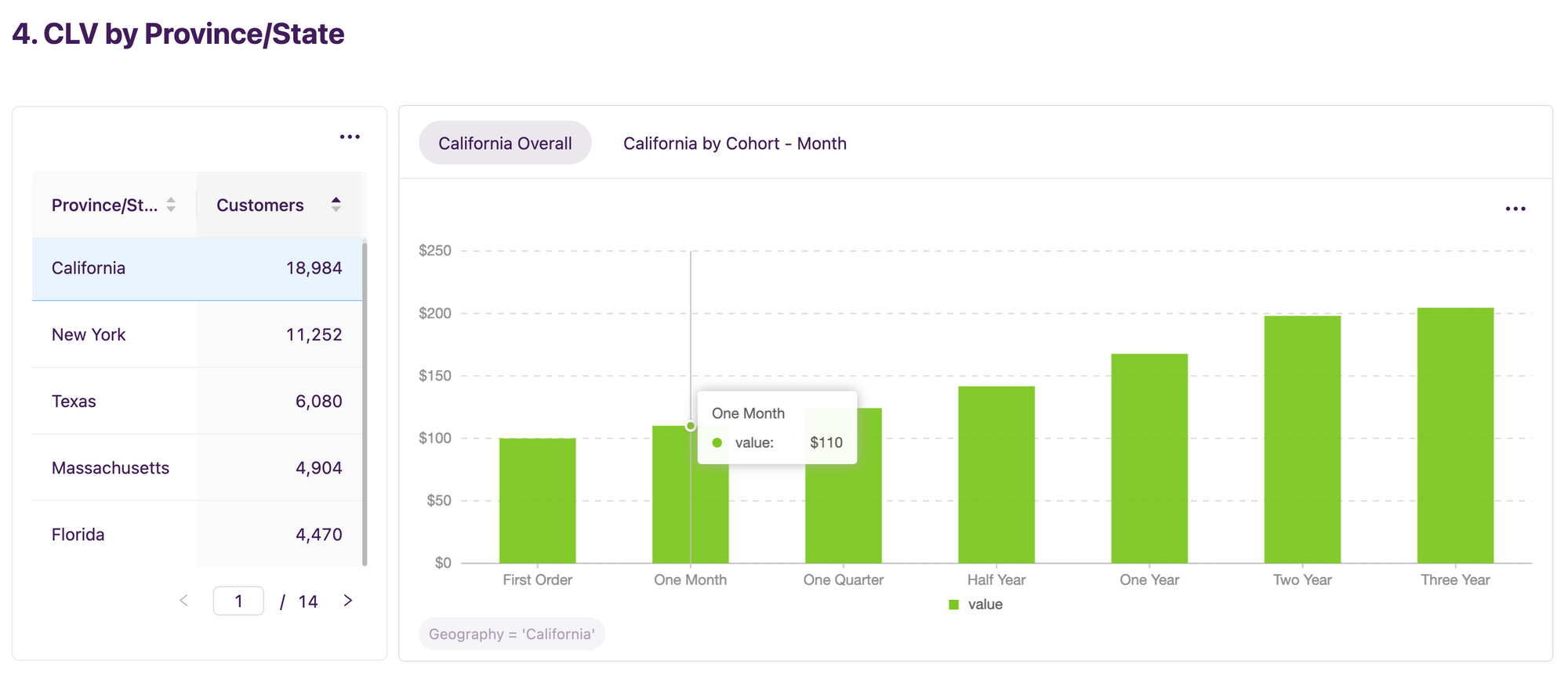
5. Customer Value
A cherry on the cake with the MagicBean customer lifetime value app is that it gives insight into each customer's lifetime value.
An advantage of this insight is that it allows you to craft retention strategies where needed and make personalized offers, enabling you to retain customers at risk of churn.
Conversely, you can also see your champion customers and draft strategies to make them spend more.
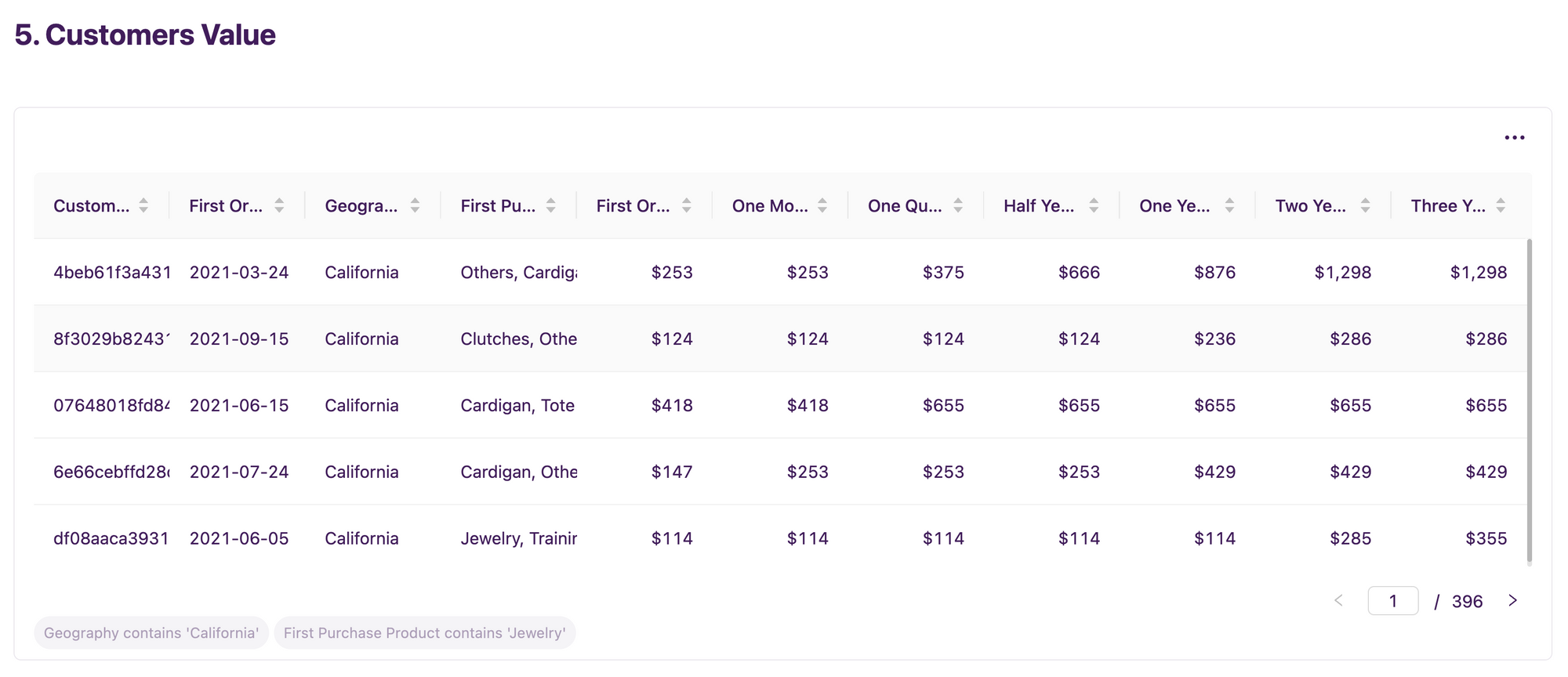
How to Increase Your Customer Lifetime Value Using Insights from Analytics
Having gained insights into your customer lifetime value from analytics, here is how you can apply these insights to increase your customer lifetime further and drive growth.
1. Segmentation: When you have a holistic view of your customers' lifetime value, you can appropriately segment them based on their value to your business.
For instance, you can know which customers generate the most revenue for your business and which have low lifetime value.
A precise segmentation of both allows you to craft marketing messages that fit both persona and urge them to spend more.
2. Acquisition of high-value customers: A detailed insight into your customer lifetime value tells you which campaigns attract the customers with the highest customer lifetime value and which marketing channels deliver the best customers to you.
Instead of spreading your resources thin, you can concentrate on the channels and campaigns that deliver the best customers to you at minimal acquisition cost.
3. Future prediction of champion customers: With insights into each customer's lifetime value progression, you can predict which customers will turn out to champion customers.
With this insight, you can draft a specialized plan for such customers to help them with a smooth transition.
4. Customer retention: Customers whose customer lifetime value is not increasing due to a decrease in the frequency of their purchase or their average order value, such customers are at risk of churn.
You can draft out marketing strategies to retain such customers.
5. Learn from your best customers: When you identify your customers with the highest customer lifetime value, you can carry out a survey or a form of customer interaction to find out from them why they are good customers.
When you find such reasons, you can replicate them with other customers.
Your customers with the best lifetime value are also good candidates for sales enablement content such as case studies.
6. Calculating your marketing ROI: When you have a clear idea of your CAC and CLV, you can gain insights into your marketing return on investment.
How much are you investing in your marketing, and how much are you gaining back?
This will allow you to make necessary adjustments to get the best out of your marketing efforts.
7. Price adjustments: A low CLV:CAC ratio is unhealthy for a business. Having a clear view of your CLV from analytics will give you an early indicator of a need for price adjustment to suit a good CLV:CAC ratio, allowing enough profit margin.
Last Words
Analytics is necessary for every e-commerce business that will do well in 2023 and beyond. Analytics will help you keep track of important metrics such as customer lifetime value, allowing you to make early changes and optimize for better profits.
Studies have shown that data-driven organizations are now 23x more likely to acquire customers, 6x as possible to retain customers, and 19x more likely to be profitable.
AI-powered e-commerce analytics tools such as MagicBean give you a holistic view of your e-commerce metrics and the valuable insights your business needs to thrive.
Book a demo to find out more about MagicBean and how it can help you scale your revenue with valuable insights today!



